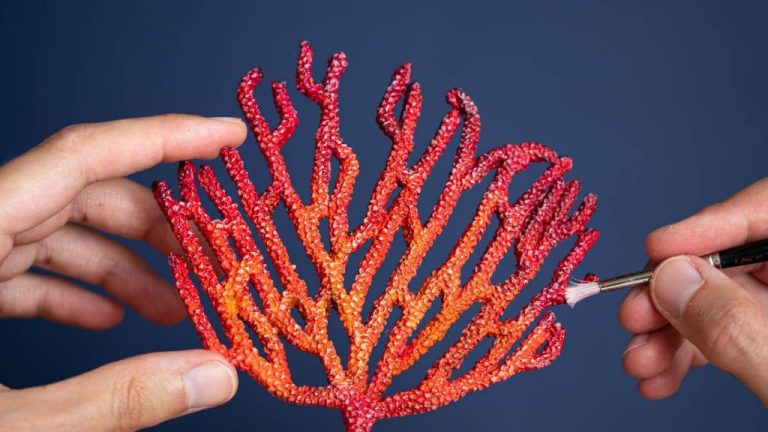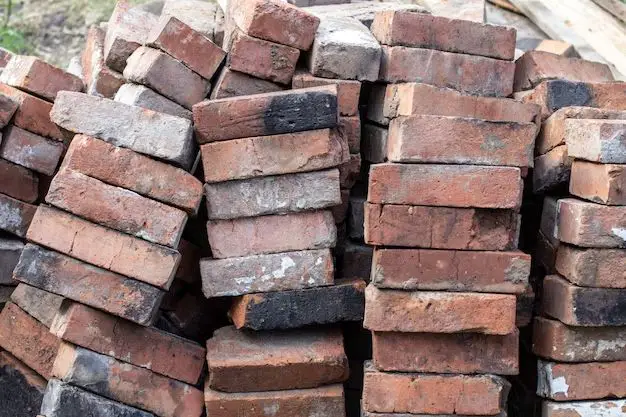Which Clay To Make Ganesha In Usa?
The Hindu god Ganesha is one of the most beloved and iconic figures in Hinduism. He is the remover of obstacles and patron of arts, sciences and intellect. Ganesha is worshipped by millions of Hindus worldwide, especially during the annual Ganesh Chaturthi festival where large, colorful clay idols of Ganesha are created and displayed in homes or public pandals.
Ganesha idols are traditionally made from river clay and immersed in water once the festivities are over, returning the clay to nature. Even outside of India, the tradition of sculpting beautiful Ganesha murtis (idols) from clay is an important part of Hindu culture and faith. This article explores the options for sourcing and working with clay to create Ganesha idols within the United States.
Popularity of Ganesha Idols in US
The Hindu population in the United States has grown substantially over the past few decades. With it, the celebrations of Hindu festivals like Ganesh Chaturthi have also increased. Hindu families and communities across the US are eager to celebrate Ganesh Chaturthi each year with the traditional ceremonies and festivities.
A key part of the Ganesh Chaturthi celebrations is having a murti or idol of Lord Ganesha. Typically, families or communities will purchase or make a clay murti that is worshipped for 1-10 days during the festival. At the end of the festival, the murti is immersed in water with a ceremonial farewell.
The demand for high quality Ganesha murtis has been steadily increasing across the US. In cities with large Hindu populations like New York, Houston, Chicago, and San Francisco, pop-up markets selling Ganesh idols now commonly appear in the weeks leading up to Ganesh Chaturthi.
Whether participating in a large community celebration or a small family puja, Hindus want access to the perfect clay murti to mark the occasion. This trend has created a growing market for those with the skills to craft beautiful and dignified Ganesha idols.
Traditional Clays
Traditional clays used for sculpting Ganesha idols in India include river clay and red ochre clay. These clays have unique properties and origins:
River Clay
River clay is naturally found along the beds of rivers across India. When wet, river clay is very malleable and easy to shape into intricate designs. Once dried, river clay hardens while still retaining some flexibility so idols don’t easily crack or break.
River clay is smooth in texture with an earthy grey or brown tone. It consists of eroded rock particles washed downstream over time. River clay is praised for its pure composition and sacred origins from holy waters.
Advantages: Abundantly available, cost-effective, easy to sculpt complex details
Disadvantages: Prone to weathering and fading quickly
Red Ochre Clay
Red ochre clay, known as geru, is a mixture of clay and red iron oxide found in mines across India. It has a distinct bright red-orange color symbolic of purity and spirituality.
Due to the addition of iron oxide, red ochre clay is more durable and holds shape better than plain clay once dried. It has a coarse, gritty texture requiring more effort to sculpt smoothly.
Advantages: Vibrant color, strong and weather-resistant
Disadvantages: More expensive, difficult to sculpt fine details
Locally Available Clays
When looking for clay to sculpt your Ganesha idol, start by checking your local arts and crafts stores. Many carry modeling clays and polymer clays that work well for sculpting. Here are some commonly available options:
Polymer Clay
Polymer clay, like Sculpey or Fimo, is very popular for arts and crafts. It’s easy to work with and bakes hard in a regular oven. Polymer clay holds fine detail well, making it great for sculpting intricate religious idols. It comes in a variety of colors, allowing you to create painted effects without having to paint after. Make sure to choose a polymer clay formulated for sculpting as some varieties are better for beads and jewelry.
Oil-Based Clay
Oil-based clays like plasticine are readily available and affordable. They’re mess-free and have a smooth, clay-like texture. Oil-based clay doesn’t harden on its own, so you’ll need to use a sealer or clear coat finish. Be aware that details can get blurred compared to polymer clays.
Air-Dry Clay
Air-dry clays naturally harden and dry at room temperature. They’re inexpensive, easy to find, and good for beginners. Brands like Crayola Model Magic are non-toxic and can be painted after drying. Air-dry clays are less durable than other options. Be gentle when handling dried sculptures.
With some creativity, clays from local craft stores can make wonderful Ganesha idols suitable for home worship. Consider durability, detailing, finishing, and your skill level when selecting the right clay for your needs.
Eco-Friendly Options
In recent years, there has been growing concern over the environmental impact of the mass immersion of plaster of paris and painted clay Ganesha idols. These idols take a very long time to dissolve in water, and the paints and decorations often contain toxic chemicals like mercury, lead, and carbon. This has raised pollution levels in lakes and rivers where idols are immersed.
Luckily, there are a number of more eco-friendly options for materials to make Ganesha idols, especially for domestic worship:
- Natural clay – Using unpainted, natural clay that can dissolve easily in water. Avoid any clay with additives.
- Biodegradable materials – Options like panchaloha (5 metals), coconut fibers, flour dough, turmeric, or cow dung.
- Recyclable materials – Papier mâché with organic glues and paints is a popular option.
These eco-friendly materials allow the idols to dissolve rapidly after immersion, reducing water pollution and environmental damage. They let devotees celebrate Ganesh Chaturthi in a more responsible manner. Many craftspeople are now providing these options for idols.
Tips for Sculpting Your Ganesha Idol
Sculpting a Ganesha idol may seem daunting, but with the right tools and techniques, even beginners can create beautiful works of devotional art. Here’s a step-by-step guide to sculpting your own Ganesha idol at home:
Choose Your Clay
Opt for an air-drying clay that’s easy to work with and suitable for beginners. Polymer clays like oven-bake clay and cold porcelain are good options. Avoid oil- or water-based clays for your first idol.
Shape the Base
Start by hand-shaping a sturdy base that’s proportional to the size of the idol you want to create. This will support the weight of the sculpture.
Build the Body
Use your fingers and simple sculpting tools to shape the body, head, trunk, arms and legs. Work gradually and gently. Let the clay dry slightly between sculpting sessions.
Refine the Details
Use loop and ribbon tools to carve out details like facial features, eyes, trunk, limbs, ornaments etc. Work patiently for best results. Allow your sculpture to dry fully before moving to the next steps.
Add the Finishing Touches
Once dried, you can sand and smooth over any imperfections. Paint your idol and seal it with varnish for protection and shine.
With some practice and patience, you’ll be able to create beautiful clay Ganesha idols to use for puja or gifting. Work slowly and enjoy the creative process!
Painting and Decorating
Painting Ganesha idols is an important part of bringing them to life. When selecting paints, be sure to use colors that are approved for use on clay surfaces. Acrylic and tempera paints work well. Avoid oils or enamel paints, as they may not adhere properly to the clay.
Traditional motifs and symbols are an essential part of decorating Ganesha idols. Here are some common elements:
- The snake tied around Ganesha’s belly represents divine energy and devotion.
- Lotus flowers at the feet symbolize purity, spirituality, and transcendence.
- The color red is often used, especially on the forehead, to symbolize purity, virtue, and the life force.
- Other colors like yellow, green, and orange carry meanings of auspiciousness, wisdom, patience, and tranquility.
- The modaka sweet in one of Ganesha’s hands represents the sweetness of the spiritual path.
- The broken tusk conveys the idea of sacrifice and being able to overcome all obstacles.
- The goad in Ganesha’s hand prompts us toward our spiritual goals.
- Decorations may include yantras, traditional geometric designs with spiritual meanings.
When painting and decorating, focus on traditional motifs that bring out the attributes of Ganesha that are meaningful to you. This is a chance to express devotion through your artistic skills.
Troubleshooting
Making Ganesha idols can sometimes lead to cracks, breaks, and other issues. Here are some common problems and solutions:
Cracks
Cracks often occur when the clay dries too quickly or unevenly. To avoid cracks, keep the clay covered and moist as you work. Wrap works-in-progress in plastic to slow drying. If cracks do appear, fill them with “slip” (liquid clay).
Breaks
Fragile areas like arms, trunks, or big ears can break off if mishandled. Use armatures or support structures made of wire or other materials to reinforce weak areas. If a break occurs, immediately moisten and reattach pieces using slip as “glue.”
Paint Issues
Paint may flake or rub off if not properly prepared. Always start with a smooth, dry, dust-free surface. Apply a primer coat first. Use thin layers of acrylic paints and seal with a clear coat for protection. Touch up any paint flaws at the end.
With care and planning, you can troubleshoot most issues that arise. Pay close attention as you work, and don’t be afraid to re-wet, reinforce, or repair pieces even after they are dry.
Immersion
After the completion of Ganesh Chaturthi celebrations, the idol should be immersed in a water body. The immersion should be carried out in an eco-friendly manner to avoid water pollution.
Make sure to use natural, biodegradable materials for sculpting and decorating the idol. Avoid plaster of Paris, toxic paints or non-biodegradable embellishments.
Choose a local pond, river or lake for immersion. Avoid immersing idols in smaller water bodies as the concentration of pollutants can be quite high.
Do not leave any non-biodegradable remnants after immersion at the water site. Collect all flower garlands, decorations etc. and dispose responsibly.
Dissolve plaster idols in a bucket first before immersion. Let the plaster dissolve completely before pouring the water into the immersion site.
Consider using a clay idol that can be immersed directly into the water. The clay will dissolve quickly without harming the ecosystem.
Avoid immersing painted idols as the paint can be toxic for water bodies. Use natural colors derived from flowers, turmeric etc. which do not contain heavy metals.
Do not immerse idols in makeshift tanks or ponds created specifically for Visarjan. The concentrated pollution can damage groundwater resources.
Help clean up remnants left behind at immersion sites after the festivities. Encourage community participation to restore the health of water resources.
With some care and planning, Ganesh Chaturthi celebrations can be completed while protecting the beautiful water resources that sustain all life on our planet.
Conclusion
When selecting clay for making Ganesha idols in the US, several options offer good results while upholding responsible practices. Traditional clays like terracotta or potter’s clay remain readily available and sculpt well, as do natural alternatives like air-drying clay or cornstarch dough. Eco-friendly commercial clays specifically designed for Ganesha making also provide an excellent choice that minimizes environmental impact. Whichever type of clay is chosen, following sustainable immersion practices is vital for honoring the water element so tied to Ganesha’s symbolism. From sourcing clay responsibly to allowing idols to fully dissolve, thoughtful intentions make the Ganesha festival more meaningful.
With some research and care taken in clay selection and use, Indian Americans can model the perfect Ganesha murti to mark the beloved festival in their local communities across the United States.




